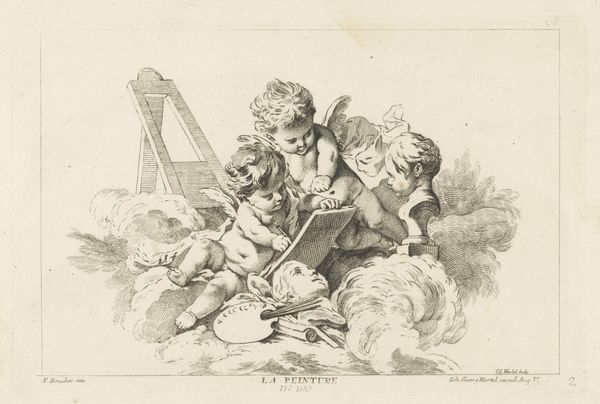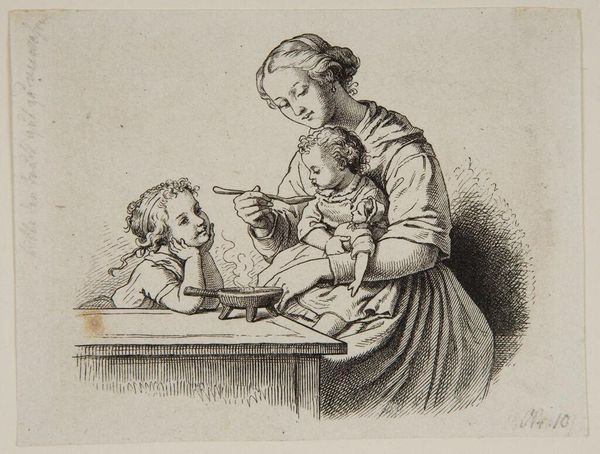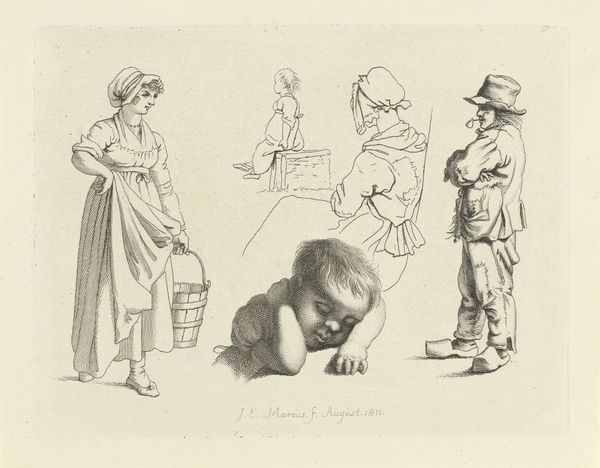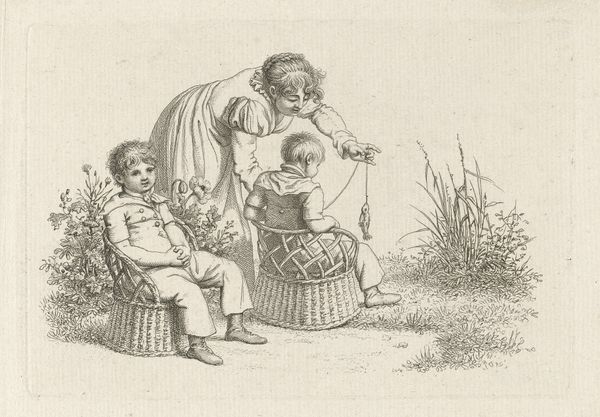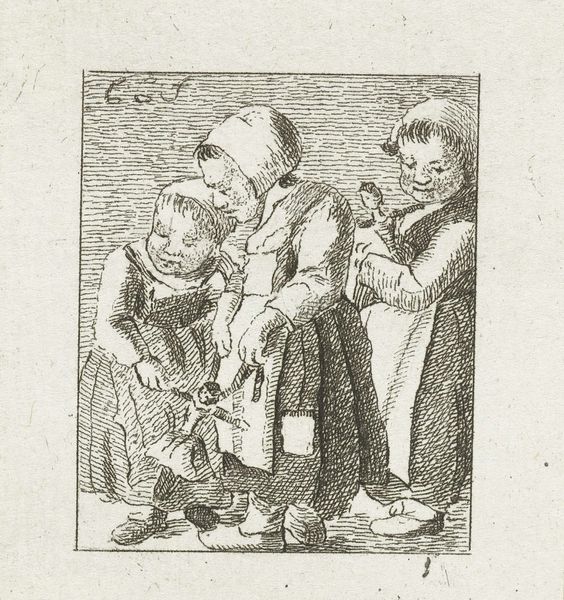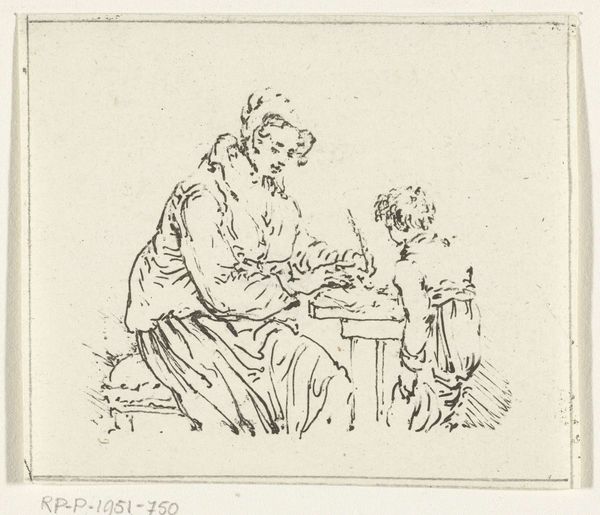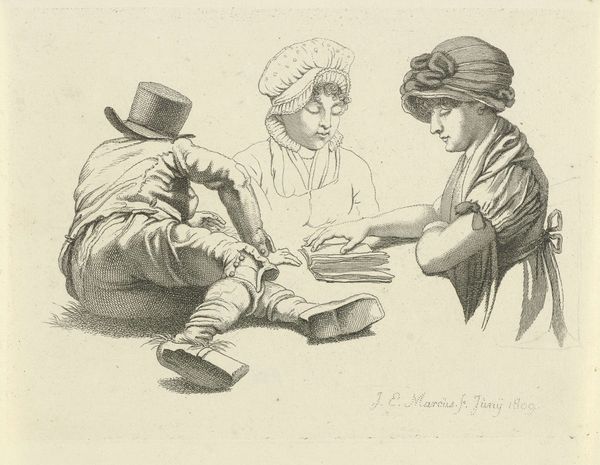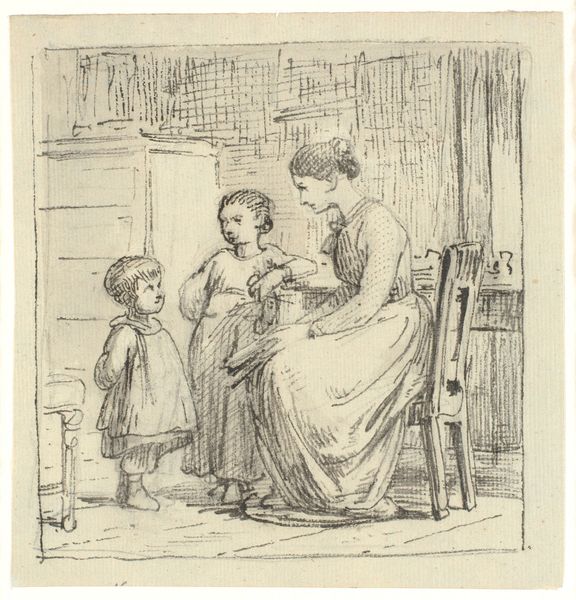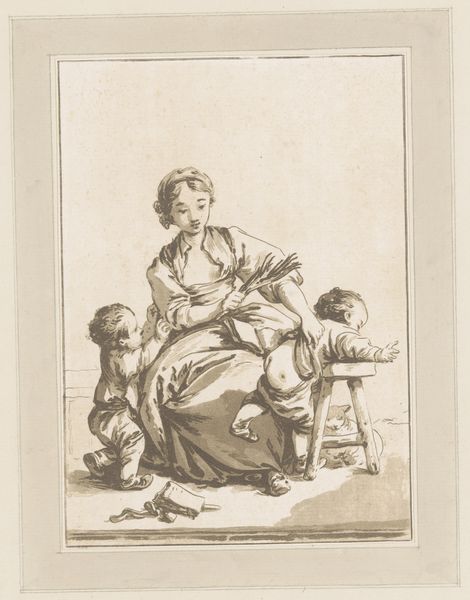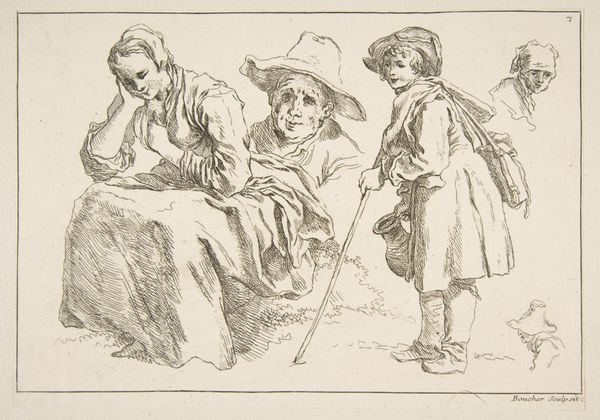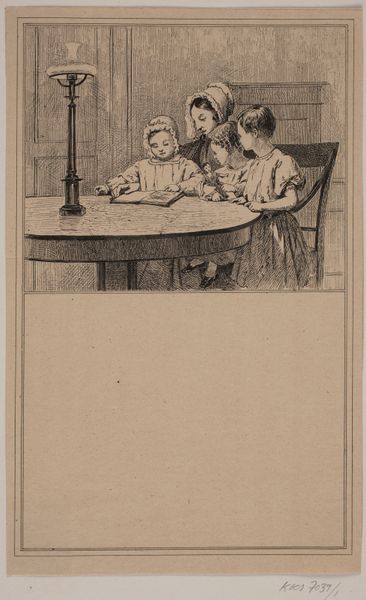
drawing, pencil, pen
#
portrait
#
drawing
#
neoclacissism
#
pencil sketch
#
caricature
#
figuration
#
pen-ink sketch
#
pencil
#
pen
#
genre-painting
#
history-painting
Dimensions: height 110 mm, width 196 mm
Copyright: Rijks Museum: Open Domain
Curator: Immediately striking is the delicate hatching in this pencil drawing by Jacob Ernst Marcus, created around 1812 or 1813. Editor: My first thought? Domesticity and slight boredom. There’s a stillness here, a quiet that permeates the scene. Curator: Precisely. This work, titled "Woman and Two Children", showcases Marcus’s skillful use of line to delineate form and texture. Notice how the varying densities of pencil strokes create a sense of volume, particularly in the woman's dress and the children's faces. Semiotically, this detailed precision signals bourgeois affluence and a culture attentive to appearance. Editor: I'm more interested in the depiction of education as social performance. This could well be illustrating a mother's engagement with educating her children; a symbolic display for visitors rather than a study. The Rijksmuseum's records might suggest a familial commission. The Neoclassical chair even adds to the performative tableau. Curator: Interesting. The repetition of rounded shapes also establishes an aesthetically pleasing rhythm. Look at the curves of the hat, echoed in the woman’s sleeves and the children’s faces; that visual rhyme provides a formal harmony. Further, the placement of these figures and objects across the horizontal plane indicates structural intent. Editor: True, however, viewing the structure of educational dynamics from a cultural perspective indicates more rigid approaches. Look how the artist juxtaposes innocence and expected learning. The arrangement reminds me that in that era women navigated carefully between maternal roles and limited educational expression. I see quiet resistance, if you will, subtly embedded within domestic expectation. Curator: Resistance? Fascinating. My reading leans more towards visual rhetoric. However, perhaps those narratives meet as you point out subtle resistance; in either context the use of form creates social intention. Editor: Undoubtedly. I'll walk away thinking more about social intention now! Curator: And I, on its visual presence and social impact.
Comments
No comments
Be the first to comment and join the conversation on the ultimate creative platform.
